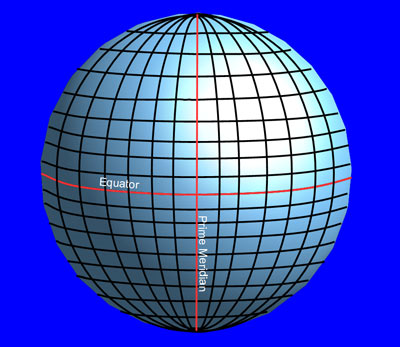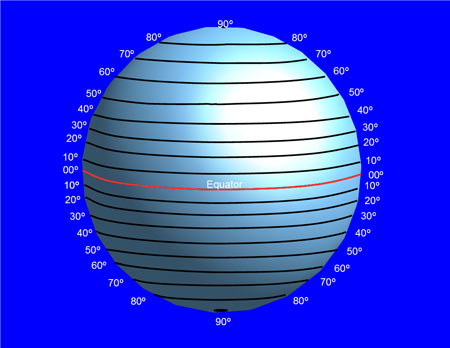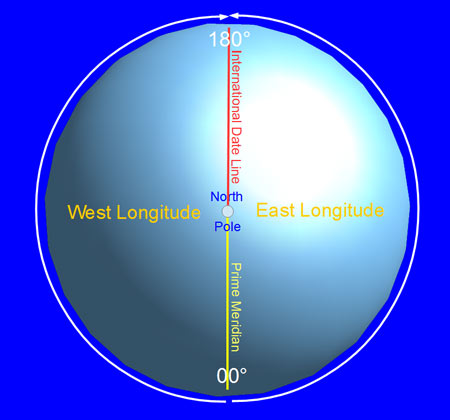Announcement: My online Land Navigation course includes four hours of video instruction, and two downloadable PDF books, all for about the same price as a typical paperback book. Get my Land Navigation course here.
Latitude and Longitude
Latitude and longitude (lat/long) are used to express location. The lat/long global grid consists of imaginary lines running both east and west around the earth, and north and south, from pole to pole.

Latitude Lines
Also called parallels, latitude lines run east and west, and are simply imaginary rings around the earth that lie parallel to one another.

The main latitude line is the Equator, which runs around the Earth's middle, and is assigned a value of 0 degrees. The latitude value increases to the north to a maximum of 90 degrees at the North Pole, and to the south to a maximum of 90 degrees at the South Pole.
Since latitude lines are parallel to one another, the distance between them remains constant. Parallels of latitude when shown on a map can be used therefore to determine distance on the earth, as follows:
- Degrees -- One degree of latitude equals 60 nautical miles (a nautical mile = 1.15 statue miles, or 6076 feet).
- Minutes --Each degree of latitude can be subdivided into 60 minutes, so one minute of latitude equals one nautical mile.
- Seconds -- Each minute of latitude can be subdivided into 60 seconds. Since one nautical mile equals approximately 6,000 feet, one second of latitude equals about 100 feet.
Longitude Lines
Also called meridians, longitude lines run north and south, and converge at each pole.

Each longitude line is assigned a numerical value, beginning with 0 degrees at the Prime Meridian--the main longitude line, which runs through Greenwich, England--and increasing to a maximum of 180 to the East, and 180 degrees to the West, thereby covering the entire 360 degrees of the Earth.

Like degrees of latitude, degrees of longitude are subdivided into 60 minutes. A minute is further subdivided into 60 seconds.
Unlike latitude lines, which run parallel to one another, longitude lines do not correlate to any set distance from one another, owing to their converging nature. At the Equator, for instance, one degree of longitude equals 60 nautical miles. That distance, however, grows ever smaller as one moves farther away from the Equator, and the converging track of all longitude lines causes them to be closer together.
Geographic Coordinates -- Any spot on the earth can be identified by a latitude and longitude value. This page explains how.

